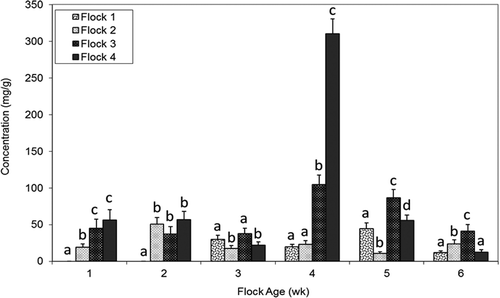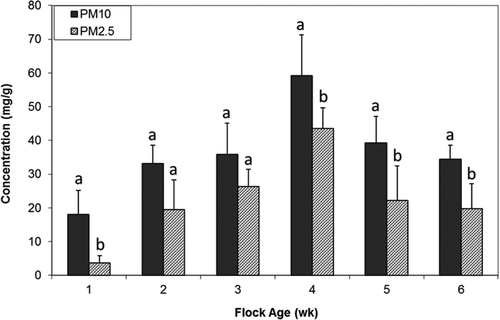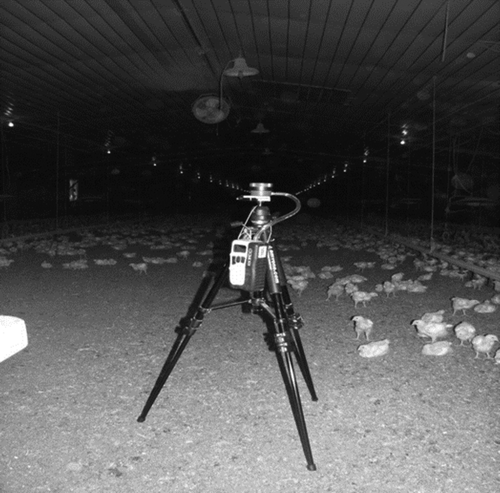Figures & data
Table 1. Mass fractions (mg/g) of polyatomic ions in the inhalable fraction (TIH) of suspended particulate matter (SPM).
Table 2. Mass fractions (mg/g) of polyatomic ions in PM10 fraction of suspended particulate matter (SPM).
Table 3. Mass fractions (mg/g) of polyatomic ions in PM2.5 fraction of suspended particulate matter (SPM).
Figure 2. Temporal trends of mass fractions of ammonium ions in the inhalable fractions of suspended particulate matter. The error bars were obtained from a pool of at least three samples spanning over the week of sampling. Different letterings within the same cluster (age of flock) signifies statistically different at p < 0.05.

Figure 3. Comparison of average ammonium ions in fractionated particulate matter concentrations (n = 3) inside a broiler house during second flock of growth. PM2.5 = particulate matter of aerodynamic diameter of 2.5 µm or less; PM10 = particulate matter of aerodynamic diameter of 10.0 µm or less. Different letterings within the same cluster (flock age) signifies statistically different at p < 0.05.


